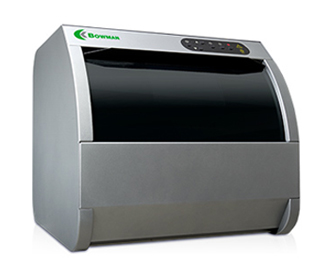Platinum plating over Titanium
Platinum's unique properties such as its high conductivity, extraordinary resistance to corrosion and high temperatures and voltages, as well as its ability to catalyze many reactions, make it an ideal material for electrochemical applications. Its prohibitive cost, however, renders it impractical for many manufacturers to produce anodes from bulk platinum. Consequently, lower cost platinum anodes have been developed that deposit a fine amount of platinum on top of a substrate made from a cheaper corrosion-resistant material.
An increasingly common example of these formulations uses a titanium substrate, although others using niobium, tantalum, carbon, and other alloys also exist. These platinized anodes are favored over other alternatives for being durable and able to operate at high voltages and are currently seen in many applications in research and industry – including cathodic protection, electroplating, and chemical sensors.
One of the most critical applications in recent years though has been in Proton Exchange Membrane (PEM) electrolysis, where porous titanium meshes or felts are platinized to act as both a catalyst and gas diffusion layer (GDL) for hydrogen production. As a result, much has been invested in optimizing the process to make the end product as cost-effective as possible. However, the combination of thin deposit and porous structure creates a challenge in accurately quantifying the amount of platinum on the substrate, which in turn makes it difficult for producers to evaluate the efficacy of their process.
X-Ray Fluorescence has an answer to this problem. Bowman XRFs are capable of accurately and precisely measuring platinized coatings down to a few nanometers, thanks to lower detection limits and low noise. XRF can be used to both determine the average deposit loading over an area and determine the thickness at a specific point, with polycapillary optics having spot sizes down to 7.5µm FWHM. Additionally, XRF has much faster cycle times and low sample preparation compared to techniques such as SEM, able to generate results in seconds.
Read our application note on platinum over Titanium mesh/screens to learn more.
Conclusion
Bowman XRF systems are versatile analytical tools for measuring platinum depositions on mesh substrates , along with other complex plating thickness, compositional analysis, and solution analysis. The reduced costs of time, personnel, and instrumentation required by other methods make Bowman XRF an excellent alternative. Call our support Team for more information.
Need Help? LET’S TALK





 Made in the USA
Made in the USA